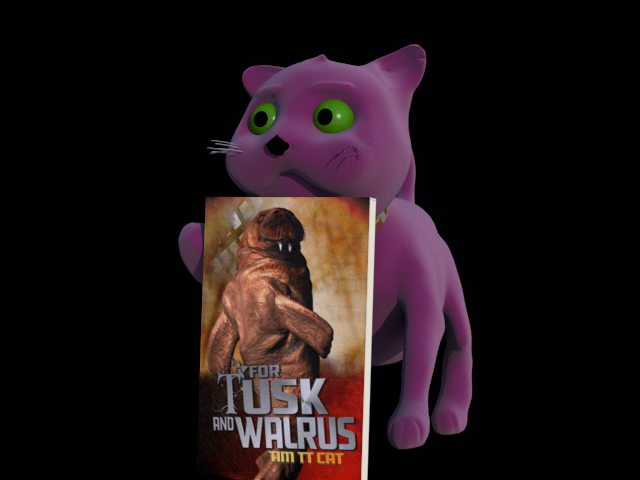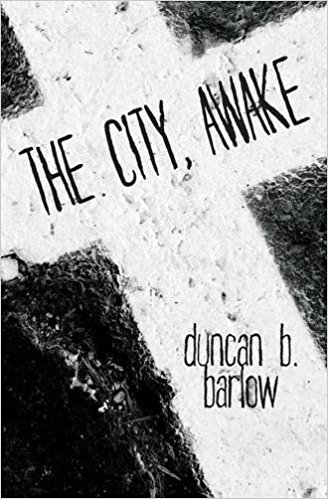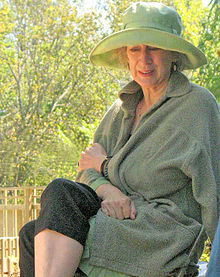(1) OPENING ROUND. Fantasy-Faction, in “The SPFBO: Introducing Round One!”, tells how they’re getting ready to participate in Mark Lawrence’s Self-Published Fantasy Blog-Off.
As you know, 300 competing titles have now been split into batches of 30 and assigned to one of the ten participating blogs. Here’s the tough part: we can’t keep them all. It’s a bit like being asked to foster a small herd of kittens, then being told you’re only allowed to adopt one of them. We try hard not to become too attached, but it proved very difficult last year and I wouldn’t be the least surprised if the same were true again this time.
(2) SPACEBALLS. Profiles in History will be auctioning “Rick Moranis hero ‘Dark Helmet’ helmet from Spaceballs.” At the end of the month reports Invaluable.
Rick Moranis hero “Dark Helmet” helmet from Spaceballs. (MGM, 1987) This articulating oversized signature helmet was worn by Moranis as Dark Helmet throughout the Mel Brooks classic Sci-Fi spoof. Consisting of 20 in. round by 14 in. tall cartoonish “Darth Vader” -stylized helmet constructed of heavy vacuum formed plastic component shell affixed to internal construction worker’s hard-hat liner to fit the actor. With screw-hinged movable faceplate section featuring vents, metalized shower drain mouth piece and triangular embedded tinted see-through lenses. Exhibiting only minor production wear and age. In vintage very good to fine condition. $8,000 – $12,000
(3) M. BANKS. Sam Reader at the B&N Sci-Fi & Fantasy Blog honors the late author — “With The Algebraist, Iain M. Banks Perfected His Space Opera”.
The Scottish author Iain Banks famously led a double life in publishing. Some of his books — the ones published under the name Iain Banks — were sold to readers as “literature,” and shelved as such in bookstores. The rest — the ones that applied his talent for creating boldly unlikeable characters and enormously complex plots to the tropes and trappings of science fiction — were published under the name “Iain M. Banks,” that middle initial serving as a beacon to genre readers across the world, telling them: this one. This is the Banks you’re looking for.
The Algebraist is peak Iain M. Banks. It’s also the only book he ever wrote to be nominated for the Hugo Award, a fact that seems almost unbelievable in retrospect.
The late, great SF pioneer, who died on this day in 2013, spent most of his life experimenting with space opera …
(4) ANY SUFFICIENTLY ADVANCED TECHNOLOGY. Yesterday, you didn’t care about this. But today you will passionately brawl about it. Natalie Zutter asks “Is Time Travel Science Fiction or Fantasy?” at Tor.com.
Even though you would expect time travel to require hard rules, it seems to most often appear in both science fiction and fantasy stories that require a certain amount of handwaving on the details. We’re given some sense of how the TARDIS operates — the chameleon circuit, and the sometimes-isometric, sometimes-telepathic controls — but it’s best just to jump in and hang on. Similarly, there’s no clear explanation for the time travel in Kindred or Outlander aside from supernatural forces working outside of our understanding or control, forces that cause certain events to occur as part of some larger cosmic plan.
(5) NEVERMORE. Maybe there’s a more subtle reason Noah’s raven didn’t come back? The Verge reports “If you wrong a raven, it will remember”.
These nine ravens were raised in captivity, growing to become familiar with the researchers. Then came the test.
The ravens were put in a cage along with two trainers on each one. The first trainer gave the raven a piece of bread. The raven then carried the bread to the other trainer on the other side, and exchanged it for cheese.
The second time, the raven was soundly rejected. Instead of getting the cheese, it had to watch as the trainer just ate the cheese in front of it.
Two days later, the researcher rounded up up seven of the birds and presented them with three trainers: the fair one who gave them the bread, the unfair one who ate food in front of them, and a neutral one. Six out of seven birds chose the fair one. One chose the neutral one. Nobody wanted to play with the mean one.
(6) I FORGOT. The City, Awake by Duncan Barlow was released in March by Stalking Horse Press.
Barlow’s metaphysical noir The City, Awake is a novel of chemically induced amnesia, doppelgangers, fanatics, and killers. Saul, a man without a history, awakes in a hotel room with a note in his pocket. Hunting for answers, he must survive rival assassins, a millionaire with an axe to grind, a shape-shifting femme fatal, a silent hit man, and a psychotic who is only looking for an exit. Barlow evokes a vast mid-century modernist cityscape in prose that is by turns hard-boiled, then unexpectedly psychedelic and delicate. With temporal and spatial distortions reminiscent of A. E. van Vogt’s The World of Null-A, the novel that inspired Godard’s Alphaville, this is a vivid investigation of identity, scientific speculation, and Biblical Apocrypha. The City, Awake is a mirror maze of dark streets and darker secrets.
(7) FEAR OF THE ARTS. Omni’s Joshua Sky asks the questions in “Where X Marks the Spot: An Interview with Steve Barnes”.
Walk me through it. I’ve read about you, but I haven’t been able to find much on your childhood. Can you give me a recap of your youth?
Steve Barnes: Born and raised in South Central, Los Angeles. I was interested in science fiction, fantasy, films and stories from a very early age. My mother and sister raised me; there wasn’t a father in the home. So I was always very interested in macho adventure.
First book that I can remember clearly reading was called Space Cat. I was in second grade, before then, I loved monster movies and stuff like that. It’s always been apart of my life. The first real sci-fi novel I’ve ever read was probably Robert Heinlein’s, Have Spacesuit Will Travel, in the fifth grade.
When did you start making attempts at writing?
The first story I remember ever writing, was in like, third grade. It was called, The Yeti. It was about an abominable snowman in a Canadian lumber camp. After that, I wrote a lot of sci-fi action adventure, space ship monster stuff. I was doing that from third to fourth grade, up through college.
(8) NOTED FUTURIST. Joshua Sky also did an “Interview with Trina Phillips, Chief Futurist at SciFutures” for Omni.
Describe what SciFutures is. I’ve read about it, I know about it, but I’d like to hear it from you.
TRINA: We do a range of things, but our main idea is that a lot of companies don’t do well with changing their ways and staying up to date with new and near future technology. This isn’t just using new systems. We’re talking about thinking forward. Some of these companies have been around for over a hundred years; being forward thinking and moving fast are not their specialty. The idea behind it is that not only do you use science fiction ideas to help propel them into the future, but we use storytelling to help them understand it, to help them comprehend this new information better. Because someone can sit there and say, I’m doing projections, and with all the graphs and charts and this and that. And we don’t do that. We go further out than those are realistic for, you know, guessing at. We’re not going to tell you what you should do next year; we’re going to tell you what you should be looking to do in five to ten years, or more — if you prefer the long view.
But it’s all theoretical in a sense, because it’s from a science fictional standpoint, right?
TRINA: Yes, except it is based on the tech that’s available now, and we have a really good handle on modern technology. Half of our staff consists of tech people — a little more than half, actually. So we have a real grounding in where the tech is, where it’s going. We know what’s feasible, and we base our suggestions on that information. But that doesn’t mean we’re not inventing things that don’t quite exist yet. In fact, that’s exactly what we’re doing.
(9) NO FUTURIST. Meantime, John Scalzi was shocked to discover that his go-to soda, Coke Zero, is on its way out: “Is This the End of Our Hero, Coke Zero?!??!!??!?”
It’s that “no sugar” part that’s apparently important, because these days, or so the news reports suggest to me, sugar is in bad odor as being the worst possible thing you can put in your body short of heroin, a proposition I’m not convinced of, but then I’m kind of a sugar fiend, so I may be biased. By calling the new product Coke No Sugar, Coke is making it clear there’s, uh, no sugar in it. So, good for hyper-literal branding, I guess. I think “Coke No Sugar” is kind of terrible as a brand name, and suspect that if consumers didn’t know Coke Zero had, you know, zero sugar in it, the problem was marketing, and not the branding per se. Mind you, if memory serves, the whole point of Coke Zero marketing in the early days was to hide from dudes with fragile masculinity the fact that they were drinking a diet beverage, which is why the word “diet” was never put anywhere near the product dress. So again, I’m not sure consumers are 100% to blame here if they didn’t catch on about the zero sugar thing.
(10) MORE ON BOOKEXPO. Shelf Awareness insists the cup is half-full: “BookCon Draws 20,000; Trade Attendance Up at BookExpo”.
BookExpo drew 7,425 non-exhibiting attendees–primarily booksellers, librarians, retailers and media members — while BookCon brought in 20,000 readers, up 2,000 from two years ago, when the consumer event was last held in New York, ReedPOP announced this week. According to Brien McDonald, event director for BookExpo and BookCon, trade attendance was significantly up this year compared to last year’s show in Chicago, Ill., and in particular, attendance at the show’s author talks and educations sessions was “exceptionally high.” McDonald also noted that for 2017, ReedPOP implemented a review process for all non-buying categories of trade attendees, including self-published authors, bloggers and consultants, in an effort to curate more “high-quality attendance.”
(11) TODAY IN HISTORY
- June 9, 1965 — Ursula Andress stars with Cushing and Lee in Hammer Films’ She
- June 9, 1978 — Walt Disney’s seminal science fiction classic *coff* The Cat From Outer Space premieres.
- June 9, 1989 — Star Trek V: The Final Frontier was first seen in theaters.
(12) TODAY’S BIRTHDAY BOYS
- Born June 9, 1925 — Keith Laumer
- Born June 9, 1930 — Lin Carter
- Born June 9, 1943 — Joe Haldeman
(13) ON THEIR WAY OUT. If you’re trying to make sense of the British elections, actively avoid Camestros Felapton’s “Exit Poll”. But if you need a laugh, click away.
(14) INCONSISTENCY. J.K Rowling calls out a problem I’ve often observed — critics of misogyny who decide to give themselves a pass whenever they have an opportunity write an insult about a politically conservative woman. If someone values human respect, that should control their choices all the time.
Just unfollowed a man whom I thought was smart and funny, because he called Theresa May a whore. 1/14
— J.K. Rowling (@jk_rowling) June 9, 2017
I’m sick of ‘liberal’ men whose mask slips every time a woman displeases them, who reach immediately for crude and humiliating words 3/14
— J.K. Rowling (@jk_rowling) June 9, 2017
(15) ZOMBIES TO THE RESCUE. In the May 25 Financial Times Charles Clover and Sherry Fei Ju note that China, which has long banned any film with ghosts or the supernatural (such as the Ghostbusters remake or the acclaimed South Korean film Train to Busan) has relented and allowed the latest Resident Evil film and Logan to be shown in China, possibly as a way to stimulate slumping box office sales. (“China unleashes zombie films to boost the box office” , behind a paywall.)
(16) GHOSTING CONS. Kara Dennison says “Let’s Talk About Lobbyconning”.
I was very confused by a comment left on Facebook concerning a convention I work for. A potential attendee asked if the con would be “open” or “closed.” No one really had any idea what this meant, until it was clarified: do you have to buy a badge to enter the convention space at all, or can you chill in the hotel lobby without buying a badge? The practice is known as “lobbyconning,” and I had never heard of it until within the last year or so. Essentially, rather than buying a membership to a convention, the lobbyconner just hangs out in the non-convention spaces of the hotel, seeing friends, showing off their cosplay, using Street Pass, etc. They see it as harmless and a way to save money. Now, quickly up front. I have sped by hotels where a convention is going on to say hi to a friend. Like. If the con is in the area. Usually if I want to see a friend at a nearby convention I’m not attending, we go get lunch or something, or if I go to the hotel we’ll meet for a drink in the bar or I go to their room. But if I’m going to see the friend, we generally leave the convention space. If I’m going to the convention to see the friend, I buy a day pass. Why? Because I am using the convention as a way to pass time with my friend, because it means they can still enjoy all parts of the con without having to abandon me for panels, and because dammit, supporting a con.
(17) A MATCH MADE IN HECK. A newsflash from Cattimothy House — “Jon Del Arroz hires Timothy the Talking Cat as his Publicist”.
Prominent local author, Jon Del Arroz entered into extensive negotiations with Cattimothy House yesterday to massively boost his profile by recruiting the services of Timothy the Talking Cat. Timothy, who is notable for his work with John C Wright, Declan Finn, Hillary Clinton and Vladimir Putin, is one of the leading editors of modern science fiction and is at the forefront of what he calls “the Pulp Revolution” (Timothy’s Jarvis Cocker cover band).
Timothy is alread taking proactive steps to boost Mr Del Arroz’s profile including new cover design concepts …

Naturally (or perhaps unnaturally), Jon was thrilled to realize “The File 770 Crowd Loves Me, Quite Literally”.
Today, Camestros Felapton upped the game of having a crush on me by making a full on book cover based on For Steam And Country — which is releasing next Thursday. This looks like a pretty time consuming effort, maybe even more so than the File 770 commenter who purchased and distributed convention ribbons for a full weekend homaging me …
[Thanks to Martin Morse Wooster, Andrew Porter, Cat Eldridge, Jon Del Arroz, Peer Sylvester, Carl Slaughter, and John King Tarpinian for some of these stories. Title credit belongs to File 770 contributing editor of the day Ken Richards.]


